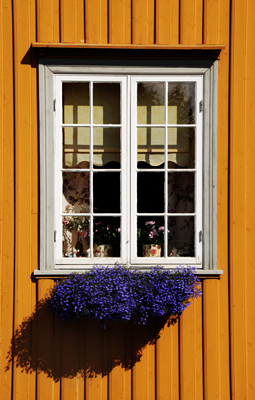

Fueled by $4 a gallon gasoline in the summer of 2008, the American public went berserk and finally jumped on the green bandwagon.
Suddenly, much to the chagrin of architects, engineers and scientists, the charlatans arrived on the scene with their newfound expertise as green specialists. This new social construct of doing good by being green really had everything to do with a panic attack, good old-fashioned grandstanding and politics coupled with revivalist capitalism in a poor economy.
And while a well-intentioned and altruistic but naïve public chanted the mantra, politicians busily gained political capital at taxpayer expense. Town boards, freeholders and municipalities, like lemmings going over a cliff, passed all kinds of energy legislation without either due diligence or even the most minimal comprehension of its technological requirements and the practical difficulties that would be incurred by such legislation.
Federal tax credits for energy efficiency, instituted nationally, now include insulation upgrades, appliances, roofing, HVAC (heating, ventilation and air conditioning), water heaters, biomass stoves (burning biomass fuel to heat a home or hot water), geo-thermal, solar energy systems and windows and doors. So out with the old and in with the new. It’s the American way, right?
Not so fast. If we take, for example, the issue of replacement windows versus the restoration of historic windows, the scientific data offers little to support such an upgrade. Historic wood windows have been cited as “endangered” components by historic boards and preservation groups throughout the country.
But societal pressure and manufacturers’ campaigns to rid houses of “those old drafty windows” along with a potential $1,500 tax credit, have created a situation where common sense has literally gone out the window.
Sustainability and preservation constitute a natural pairing that is tied together by authenticity and not wholly concerned with energy efficiency alone. Preservation solutions, for instance, involve more labor and less materials, so the work is actually kept within the local economy.
Mortise and tenon construction in antique windows is amazingly strong and easily repaired. Most of these old windows, those at least 60 years old, come from old growth timber that is much denser and impervious to the ravages of weather compared to today’s managed forests and fast-farmed softwoods.
Old windows work on an ingeniously low-tech and simple balancing system of weights and pulleys that are easily fixed if broken. And yet, one of the biggest myths about weight pockets is that they allow for the infiltration of cold air causing a thermal short-circuit (hence, “the drafty window”). This cold air can come from a poorly caulked gap between the exterior trim and the siding or gaps in the seal at floor joists.
Additionally, operable windows can, in point of fact, limit the size of the air conditioning plant. Repairing a wood sash, compared to installing a replacement unit, saves trees and energy generated by the manufacturing process.
Old windows fit old houses. So once the original window components are removed, no matter how well crafted the retrofit, authenticity disappears along with the indicators of age such as texture in mottled glass. The replacement units are just that, replacements, that come with a 10-year warranty at best.
The claim “maintenance free” is more hype than reality since the materials used in these units— vinyl, fiberglass, sealants, coatings and desiccants—all degrade and are not candidates for conservation. The proven winners, however, wood windows that have already lasted 60 to 100 years could go for another 100 if properly maintained.
Embodied energy (which comprises the combined total energy required to harvest raw materials, manufacture, transport and install them) is not only conserved by preserving historic windows but also obviates the need for energy consumption produced by the manufacture of replacement windows. Ironically, building materials ranking high on the list of embodied energy consumption are aluminum, glass and vinyl.
Furthermore, the polyvinyl chloride (PVC) used in many brands of replacement windows is causing growing concern in the building industry because of its toxic by-products. PVC, when burned, releases toxic quantities of dioxin. Lead is also used as a stabilizer in the manufacturing process for PVC so, as a totality, these replacements may be anything but green.
As for energy savings, consumers should understand that when window manufacturers talk about low U-values (a measurement of the pace of heat loss through materials), they are specifically referring to the center of the glass rather than that of the entire window unit.
Interestingly, U-values for whole window replacement units, which can be found at the National Fenestration Rating Council, prove to be nowhere near as good because of air-infiltration around the rough opening and window frame. These new units, which sit within the existing window opening with their independent unbending structure—unlike the dimensionally stable originals with good weather stripping—will give way to the seasonal movement of the house due to changes in temperature and humidity and this results in air gaps that are, in effect, draftier than the original antique units.
The dimensional stability of these old windows, due in part to better milling methods involving quarter or radial sawing, provides added perks since they can also hold paint better as well as metal fasteners.
And now for the dry facts, as reported by the New England Window Restoration Alliance. The results of the Field Study of Energy Impacts of Window Rehab Choices—performed by the Vermont Energy Investment Corporation, the University of Vermont School of Civil and Environmental Engineering and the U.S. Army Cold Regions Research and Engineering laboratory—stated that the cost savings to replace perfectly working old windows with new was negligible.
“The estimate first year energy savings between a restored wooden window with a good storm window versus a replacement window was $.60,” the report stated. “The decision to renovate or replace a window should not be based solely on energy considerations, as the difference in estimate first year savings between upgrade options are small.”
As for Low-E (Low-Emittance) glass, it, along with laminated glass as well, can be swapped out in single-glazed antique windows or even on storm windows for additional energy savings. This is a very cost effective way to improve the window unit’s U-value without compromising its integrity. Traditional, Low-E glass has a slight tint but the newest, cutting-edge “smart glass” version has a decided tint that many find aesthetically unappealing.
While Low-E windows do improve energy efficiency, it should be noted that they also impair the quantity of full-spectrum light emitted. In northern climates in the winter months, health considerations for some individuals might be more significant than the thermal benefits of Low-E glass since full-spectrum light is considered important for the human immune system and for individuals suffering from seasonal affective disorder. Low-E, argon-filled windows can remove as much as 40 percent of full-spectrum light.
So back to knowing the cost of everything and the value of nothing. Available research studies on the estimated payback in energy savings for replacement windows ranges between 40 and 240 years. Taking the long view, replacement windows consume enormous quantities of energy what with producing, transporting, removing and then dumping the old units. The existing building already contains embodied energy.
Windows are an important link in the chain of sustainability but it isn’t all about energy conservation. It’s about making sensible and responsible choices. Richard Moe, president of the National Trust for Historic Preservation, notes, “We can’t build our way out of the global warming crisis. We have to conserve our way out. That means we have to make better, wiser use of what we have already built.”
In my opinion, the issue of window replacement, by example, indicates the wide-ranging and not so simple considerations that need to be applied to an evolving understanding and definition of sustainability.
For more information, visit the online version of the National Trust for Historic Preservation’s Wood Window Restoration Tip Sheet at preservationnation.org or look up the National Park Service’s Preservation Brief 9, The Repair of Historic Window Wooden Windows, at nps.gov.
Anne Surchin is an East End architect and writer.
 More Posts from Anne Surchin
More Posts from Anne Surchin